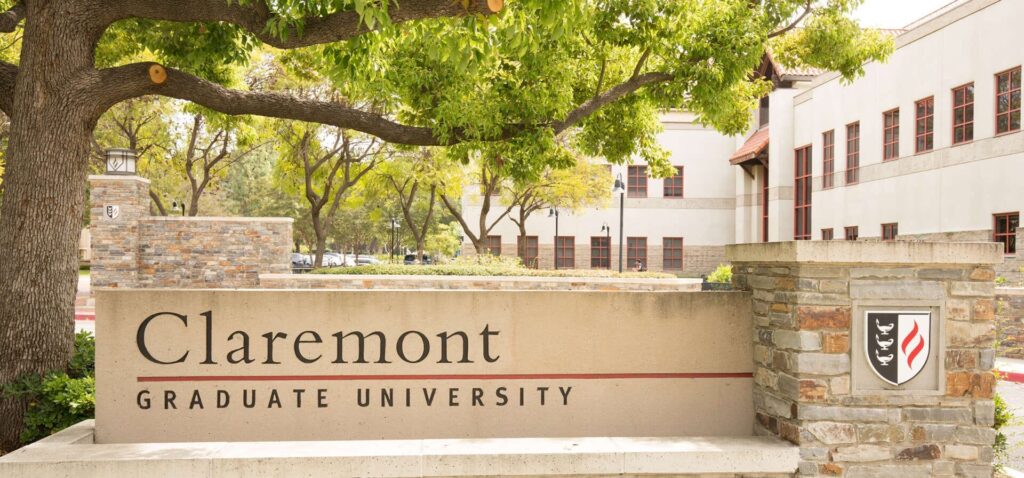Is Claremont still the city of trees?
City of Trees is more than just a nickname in Claremont. It’s a way of life.
The area’s lush urban forest is a huge draw for many of the city’s inhabitants, a notable part of the local landscape since the late 1800s. The ongoing drought and recent debate over the city’s tree trimming policies, however, ha ve called that title into question.
ve called that title into question.
Residents are stepping forward to ensure the proclaimed City of Trees stays that way. Leading this cause is the recently instated Tree Action Group (TAG), a new subcommittee of Sustainable Claremont, playing an active role as the city’s community and human services department works to amend its long-standing tree policy. The updated tree manual, currently in the review process, is expected to come before the Claremont City Council this spring.
TAG was first formed nearly a year ago by locals taking action against a proposal to remove dozens of mature pines from the Claremont Club neighborhood. Since that time, group members have made it their purpose to educate the community and influence local policy when it comes to Claremont’s urban forest.
“It goes beyond simply calling ourselves the City of Trees. The value of trees here in Claremont is much more than the altruistic aspect of protecting the environment, but defines our community’s culture and livability,” said Claremont resident Barnabas Path, who co-chaired TAG along with the late Michael Heilpern, who founded the action committee with his wife, Linda.
“It’s about quality of life,” Mr. Path continued. “We don’t always recognize that, but you notice when the trees are gone.”
The city’s 81-page Tree Policies and Guidelines Manual was first adopted in 1997 and later revised in June 2011 in an effort to preserve the characteristic community forest. The guidebook also served to dictate a defining set of rules for proper maintenance and enhancement of Claremont’s canopy of more than 20,000 trees. Budgetary concerns, however, have served as one of the tree policy’s biggest obstacles.
“Tree maintenance is expensive and easily bypassed without immediate recognition of what it’s costing us,” Mr. Path said. “It’s not that the city doesn’t care. They truly do. But because of budgetary pressures, what begins to happen is we eliminate resources assuming we will get to them next year. The immediate effect isn’t seen or felt until much later.”
Without proper maintenance and restoration, the urban forest of Claremont’s present may become a part of its past, points out Mark von Wodtke, a Claremont resident and registered landscape architect who is also among TAG’s membership. To combat future uncertainties, Mr. von Wodtke and TAG are advocating for an urban forest master plan to be included as part of the city’s tree policy update. The plan would provide foresight in adding and regenerating the city’s tree population, and help promote the city’s general plan goal of better “preserving its existing trees, replacing trees that are damaged or dying, and expanding community forests in newer areas of Claremont.”
“Claremont has a wonderful urban forest, but it’s rather mature. Like any natural forest, there are constantly new saplings being introduced as and older trees die out. We need to be doing that in Claremont,” Mr. von Wodtke said. “There are newer parts [in town], like Village West, where the urban forest hasn’t been fully established. We need a master plan that does that while anticipating where trees will be taken out.”
Maintenance and misconceptions
As talk over an urban forest master plan continues, Claremont officials look to previously established guidelines as they continue to preserve the city’s saplings. The code includes contracting with a certified arborist for maintenance of city-owned trees and restricting residents from pruning or removing any city-owned trees, those planted along city streets, in publicly-owned facilities and typically those within 8 to 10 feet of a curb in front of a private property.
While protocol is in place, protecting local trees sometimes falls out of the control of city sanctions. One of the biggest problems Claremont tree activists have taken issue with is the tree trimming taking place on private property. Trees with branches trimmed bare, like that of a tree found on Indian Hill Boulevard just north of Base Line Road. Examples like this have popped up throughout the city, becoming a running joke that “The City of Trees and PhDs is slowly becoming the City of Chumps and Stumps.”
The damage is in part caused by a common misconception of tree trimming, according to Mr. von Wodtke. A proper tree-trimming job looks like it’s never been done in the first place, he states. When trees are cut excessively, residents run the risk of having their trees sprouts shoots called “suckers,” that can eventually kill the tree and pose a threat to those near it. From the suckers sprout flimsy, poorly attached branches that, in a windstorm, can be hazardous.
“When a tree has been trimmed by a trained arborist, you can hardly tell they’ve been there,” he said.
Just as trees are falling victim to bad pruning, residents are easy prey for tree trimmers offering their services without disclosing whether they have proper certification, says Drew Ready, a Claremont resident who also works as a certified arborist.
“In general I think it’s a major misconception that anyone that drives a truck and owns a chainsaw understands tree care and follows ANSI A300 Tree Care Standards,” Mr. Ready said. Many do, but many do not.”
In addition to lacking the certification, some tree trimmers do not have the Claremont Business License required to perform services within the city. Because residents are unaware of this, however, work is performed anyhow. The city can do little to stop these practices, but providing public outreach and information is one step that can be taken. Residents may find a list of certified and licensed tree care services through the International Society of Arboriculture at www.treesaregood.org/findtreeservices/FindTreeCareService.aspx.
And though the city’s hands are tied when it comes to dictating what can or cannot take place on private property, Mr. Ready, who helped the South Pasadena Natural Resources Commission revise its tree ordinance in years past, would argue Claremont’s laws could go a step further in referencing national tree guidelines and implementing an urban forest management plan.
“This is the first step in developing effective policy and guidelines,” Mr. Ready said. “We kind of put the cart before the horse when we developed a street tree ordinance without one…We need to bring our ordinance and codes current to protect significant trees on both public and private property from topping, unpermitted removal, or damage during construction. Since our ordinance was developed there have been a lot of changes in the policy best practices.”
Change is underway as the Claremont Community and Human Services looks to build upon its current tree policies and work towards better public outreach. Feedback received from TAG members and community tree advocates has been an important part of that journey, notes Kathleen Trepa, director of community and human services.
“Their work is making an impact,” she said. “It’s been a very productive and collaborative process.”
—Beth Hartnett
news@claremont-courier.com










0 Comments